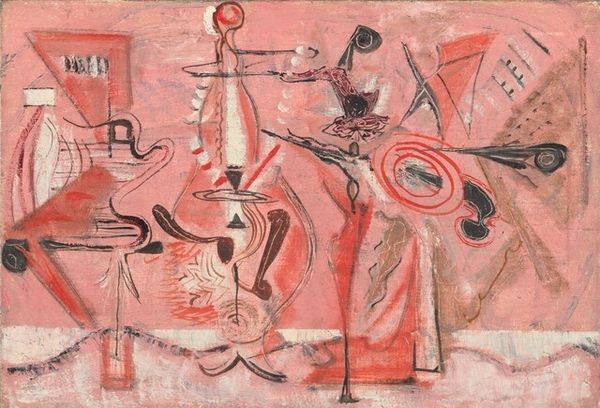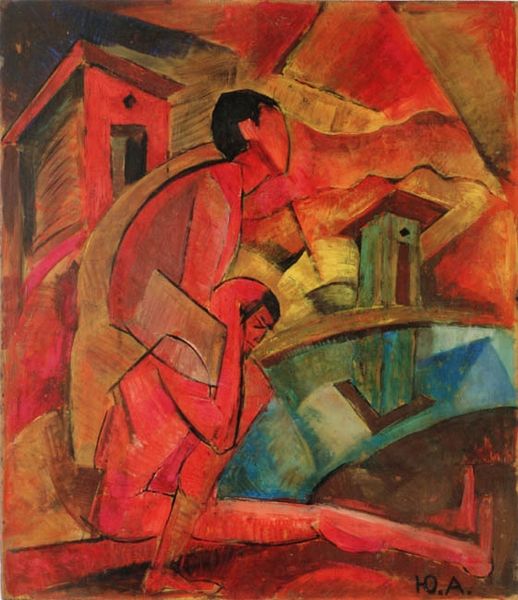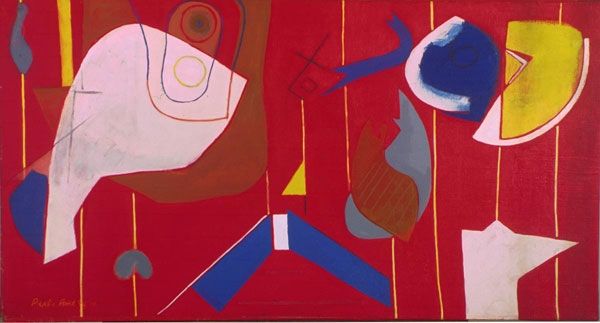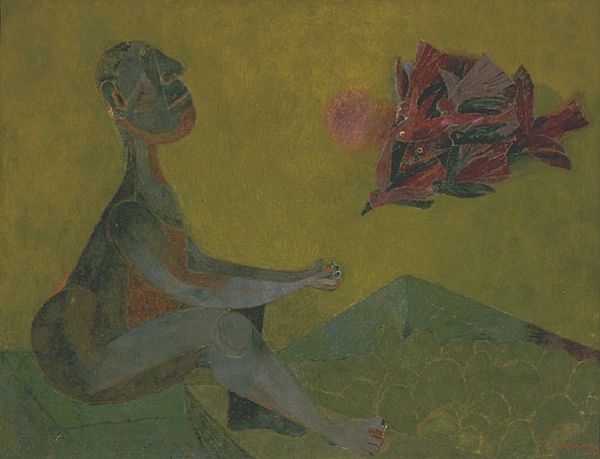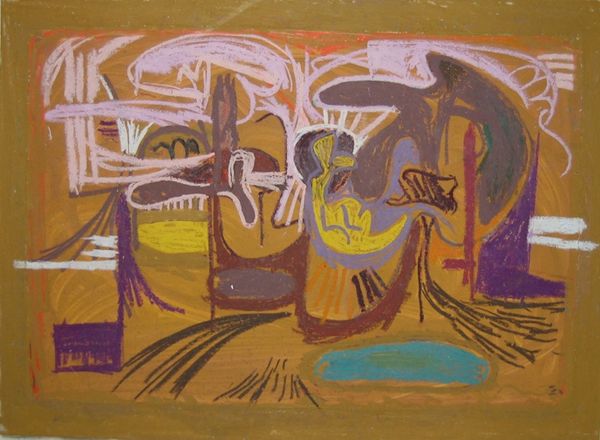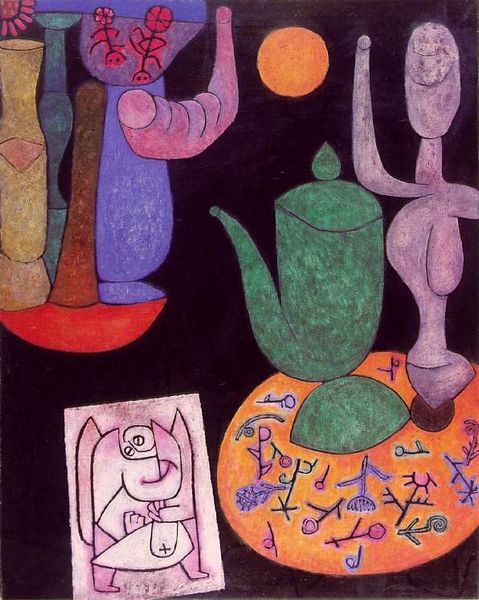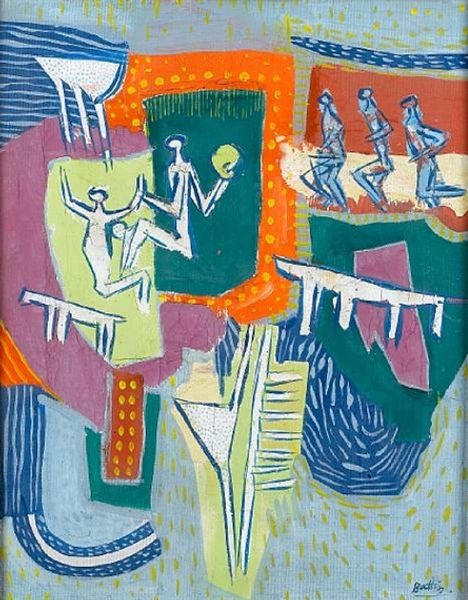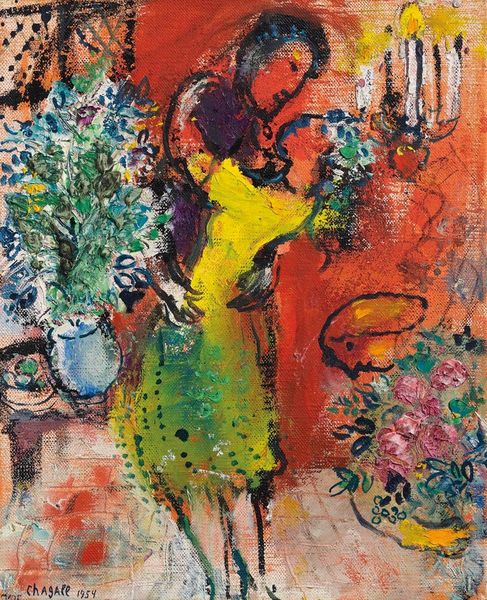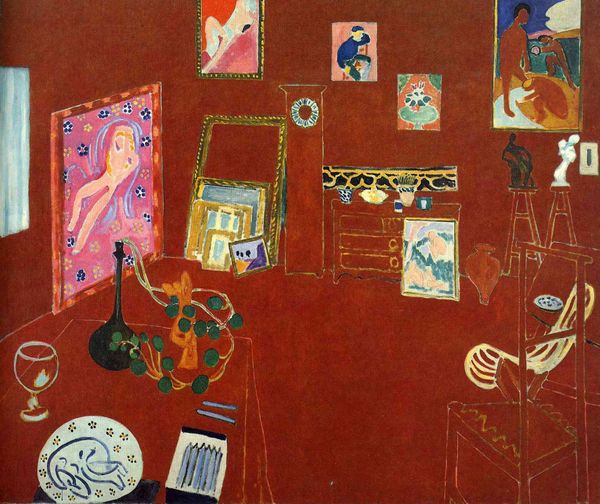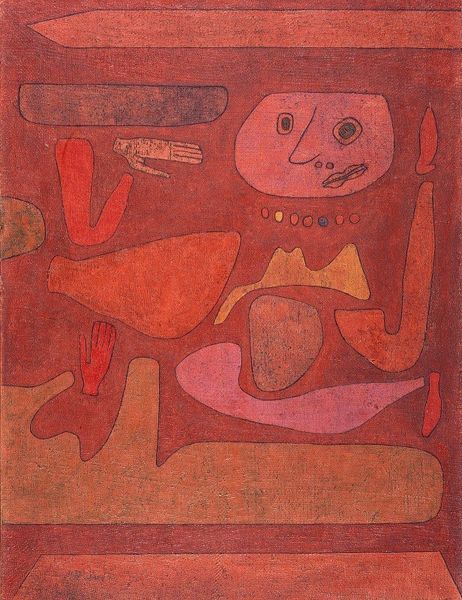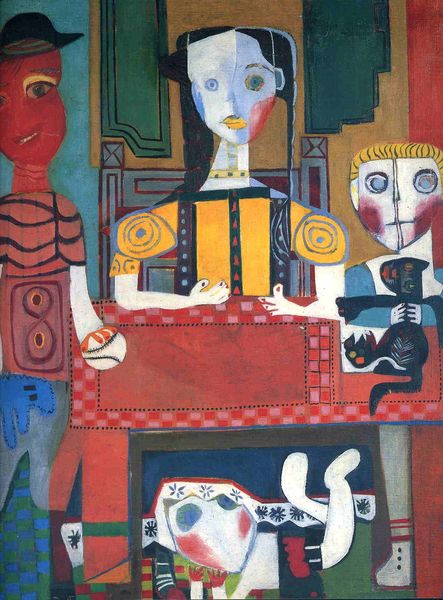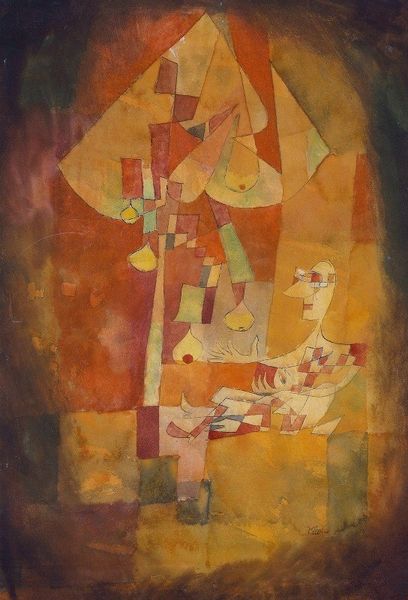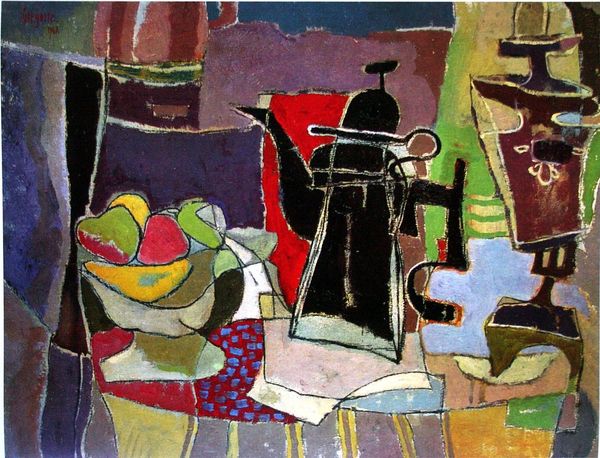
painting, acrylic-paint
#
abstract-expressionism
#
abstract expressionism
#
abstract painting
#
painting
#
landscape
#
acrylic-paint
#
figuration
#
acrylic on canvas
#
abstraction
#
modernism
Dimensions: 130.2 x 194.9 cm
Copyright: Rufino Tamayo,Fair Use
Curator: Rufino Tamayo’s 1959 acrylic on canvas, “Children’s Games,” presents an intriguing composition for us today. Editor: My immediate impression is that the overwhelming crimson creates a visually jarring landscape, almost unsettling. It feels less like playful recreation and more like… heightened drama? Curator: Interesting. I find the interplay of geometric forms—circles, triangles, and the roughly anthropomorphic figures—suggests a kind of formalized game. Think of chess or even a ritualistic dance. The abstracted human figures rendered as geometric volumes are connected through lines and textures and serve to activate the surface. Editor: True. But look how the figures are situated within that monochromatic wash, as if consumed by their surrounding, almost symbolic. It's compelling, and makes me consider post-war Mexican art which had its public role during that time, where abstracting childhood may have functioned as a commentary of innocence lost. Curator: That is a thoughtful read. The composition is remarkably balanced despite its seemingly chaotic arrangement, each area of the canvas interacts to guide your gaze through it. Note also the textures – those layers built up almost seem geological in their presence. Editor: Speaking of geological, the earthy reds and pinks are also a very clear formal device which connect his pieces to themes of Mexicanness that dominated international discourse, with Tamayo placed between promoting, adapting, and questioning it in the 50’s and beyond. Curator: Indeed, although the scene is far from photorealistic, we are prompted to ponder deeper connections here – as you note, beyond purely visual play. How form and social context meet each other. Editor: The heavy abstraction works very evocatively with social circumstances around art reception. Well, this encounter has certainly colored my interpretation! Curator: Yes, considering both intrinsic compositional devices and external considerations have made this exploration more complete.
Comments
No comments
Be the first to comment and join the conversation on the ultimate creative platform.
